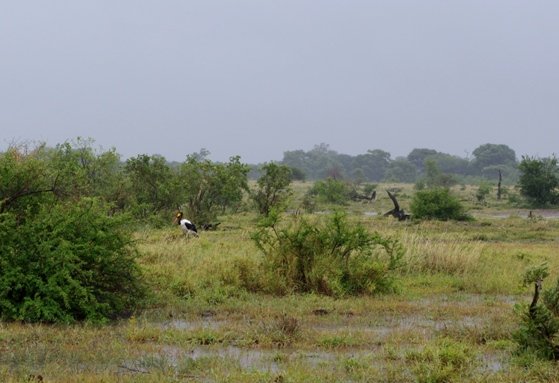Dining out in saddle-billed stork style

Author: Ivan Lätti
Photographer: Jack Lätti
Fresh water becomes a little much during a flood. The flood of January 2012 in the Lowveld and Mozambique caused roads to close and tourist schedules to change in the Kruger National Park.
Much was, however, on offer in the form of unusual sights in the inundated landscape and resulting animal behaviour. This saddle-billed stork enjoyed the proliferation of frogs all over the normally dry parts of a floodplain. Saddle-billed storks are known to take sightseeing tours over wider terrain themselves when the good rains come; quick to capitalise on an opportunity. Their main diet of fish is surely not available in grassy places like this. Land snails or molluscs and many kinds of worms are common here, all delectable saddle-billed stork food.
And the land snails are proliferating through slow, but sustained foreign invasion. Land snails and slugs have been described as adept long distance hitchhikers. Agricultural activities involving foreign crop introductions have so far aided at least 34 alien mollusc species to call South Africa their home. This had probably already started in the 17th century. The process is ongoing, in spite of preventative measures, maybe even faster than in the old days.
Ironically, the establishment of the country’s early botanical gardens involving much exotic plant material, facilitated many free rides for immigrant snails (D.G. Herbert (2010) SANBI Biodiversity Series 15).

